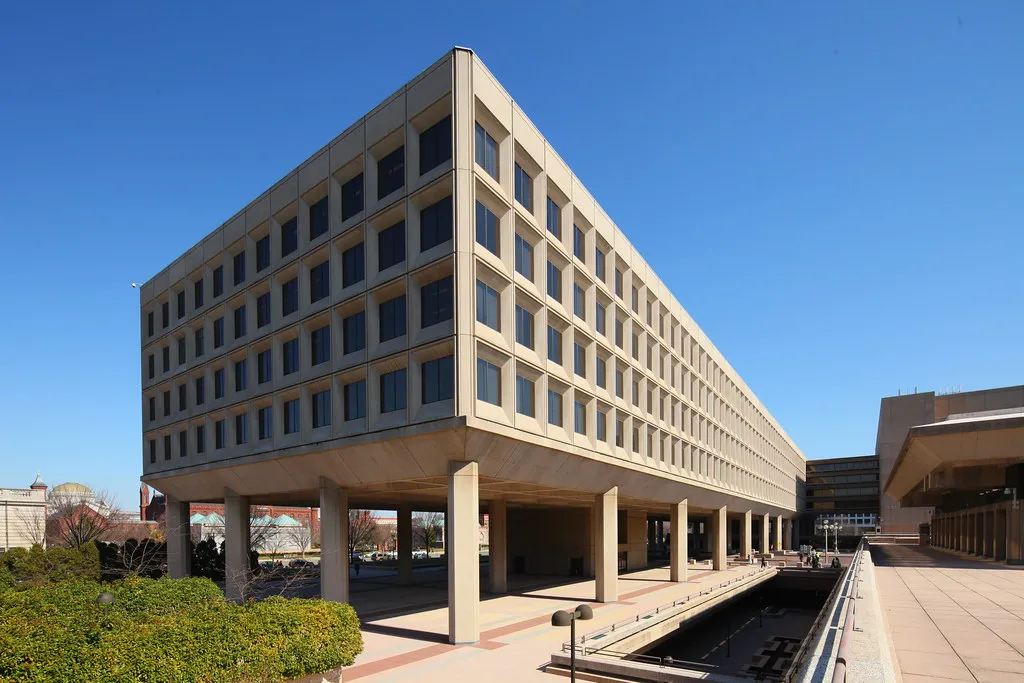
The age of hybrid work is as much a part of the Federal employee experience as it is in other corporate workplace environments. From lease expirations to remote work, Federal real estate portfolios and buildings are being underutilized while crucial maintenance is underfunded, according to research data published and testimony by the U.S. government.
“Many agencies realize that they can adapt their workplaces to more effectively and cost-efficiently carry out their missions,” said Nina Albert, the commissioner of the General Service Administration’s (GSA) Public Buildings Service, to the Senate Environment and Public Works Committee in September 2023. “Post-pandemic, agencies are gaining additional insights about the needs of their workforce, different and better approaches to achieving their mission, as well as approaches to the workplace.”
At a time when long-term sustainability and building energy use are becoming a more front and center topic, the Government Accountability Office (GAO) has made it clear that there are missed savings’ opportunities – in the hundreds of millions of dollars. A lack of funds to repair government buildings is making it much harder to sell underutilized real estate.
Despite having a maintenance budget, the funds the GSA takes in from Federal agency leases are also used to fund other expenditures across the Federal government. Leaders from the GAO and GSA are pressing Congress for more funding to be allocated toward these maintenance needs.
What will the workplace of tomorrow look like for government agencies? Join us at Flex/23 D.C. to discover how Archibus by Eptura is built to support the unique workplace and asset needs of Federal operations.
4 ways to improve Federal Building Operations
Underutilized Federal office space impacts environmental and financial costs, according to the GAO’s 2023 report “Federal Real Property: Preliminary Results Show that Increased Telework and Longstanding Challenges Led to Underutilized Federal Buildings.”
The accountability office studied 24 total agencies and looked closely at the percentage of space utilization – 17 of the 24 had an average occupancy rate of 25%. Each year, Federal agencies allocate roughly $2 billion for building operations and maintenance expenses, regardless of actual usage. Plus, an additional $5 billion is spent annually on leasing office buildings. By consolidating office space, costs could be minimized.
1. A need for utilization benchmarks
Given that the GAO data shows building utilization ranges of 9% to 36%, underutilization isn’t an easy problem to solve the way things operate today. The GAO finds there aren’t benchmarks for how federal agencies should measure utilization to guide agency efforts.
David Marroni, acting director of GAO’s physical infrastructure team, told a Senate committee that agencies have uncertainty about return to office plans and benchmarks are not in place to track all the change since the beginning of the pandemic – with all the remote telework.
“To be clear, figuring out how much office space agencies really need and shedding any they don’t, won’t be easy, quick, or cost-free,” Marroni said.
Plus, Federal employees have become more comfortable with working remotely, reducing commuting time and expenses, or working in an outdated office environment where their home setup may have more updated office and desk equipment.
2. A need for funding maintenance, repairs, redesigns, and renovations
The U.S. government owns 511 million square feet of office space. And it costs billions of dollars a year to maintain. Since 2011, nearly $1 billion is taken each year from the Federal Buildings Fund to cover other agencies’ budgets from Congress. Not having these funds has made consolidating office space difficult and hard to catch up on the backlog of deferred maintenance requests.
And minor repairs can often turn into much bigger maintenance projects, officials explain to Congress. Delayed repairs have occasionally forced GSA to temporarily relocate an agency’s employees to new space until repairs are completed. To move ahead with consolidation, the GSA needs additional funding.
3. The need for adaptability
Per the GAO, heads of agencies can be reluctant to share “headquarters space among agency components or with other agencies” making it difficult to adapt or reconfigure space.
But benchmarks and funding aren’t the only challenges. There is also resistance to give up space because of uncertainty about future building office needs – especially since remote and hybrid policies may fluctuate. “Concerns about the future of in-office attendance policies and habits have caused a reluctance to reduce headquarters space,” concludes the GAO.
Marroni told Congress that the administration should not lose sight of the “unique opportunity agencies now have to creatively and fundamentally reconsider their office space needs.”
“Agencies need to ask themselves, ‘Are there ways to reduce our footprint and save money, while still ending up with more modern space that helps us better accomplish our mission?’” he said.
4. The need for sustainability
Sustainability is a lot more than environmental compliance. The shift to the hybrid work model has the potential to reduce their total energy usage. Why? With fewer people in the office daily – a reduced office footprint – less energy is required in the workplace. Sustainability is about using only what you need over the long haul – and limiting waste. And it’s about better planning and cross-agency cooperation, adapting to shared and dynamic space models, and using technology to operationalize the entire built environment to better control:
- Heating, ventilation, air conditioning (HVAC), and lighting costs
- Equipment and maintenance costs
- Fit-out scales and costs
- Cleaning costs
- Water usage
Reduce waste with improved data and metrics
Comprehensive data – acquired through space planning and asset management technology – can help agencies better manage and maintain their buildings and all the assets within them.
Today’s worktech, including Integrated Workspace Management Systems (IWMS), measures desk and meeting room usage, and occupancy levels, and helps identify ways to consolidate office space. For example, you can avoid rigid desk assignments, team or neighborhood designations, and large, underutilized areas. Focus on dynamic space planning and allocation. Consolidate staff activities into a single floor or designated area on days with lower office attendance.
Agencies that implement desk bookings and manage the openings of floors – similar to how hotels operate – have cut their Commercial Real Estate Operating Expense Ratio (CRE OXR) down significantly.
Cloud technologies are also becoming a bigger part of the Federal technology ecosystem. If you’re evaluating cloud technologies, it helps to have a background in the evolution of FedRAMP.
Cut costs with energy management
“Office buildings also have environmental costs that could be lowered with better utilization,” says the GOA. The accountability office cites an example of how the GSA renovated and reduced its current real estate footprint, which helped reduce energy consumption and costs.
One way to reduce environmental costs is by using lighting, temperature, and occupancy sensors to monitor in-office conditions and automatically adjust energy use based on actual usage needs.
When you connect sensors to an IWMS, facilities teams can get accurate and comprehensive insight into how their space is used and for how long. Occupancy sensors are among the most crucial technologies to be adopted by 2025 — along with automation systems and environmental controls, according to JLL research.
Bottom line: Building consolidation, updated office design, and shared space models leveraging today’s worktech, can reduce government spending and waste.
When is Flex/23 D.C.? Thurs., Nov. 9. Register today.





